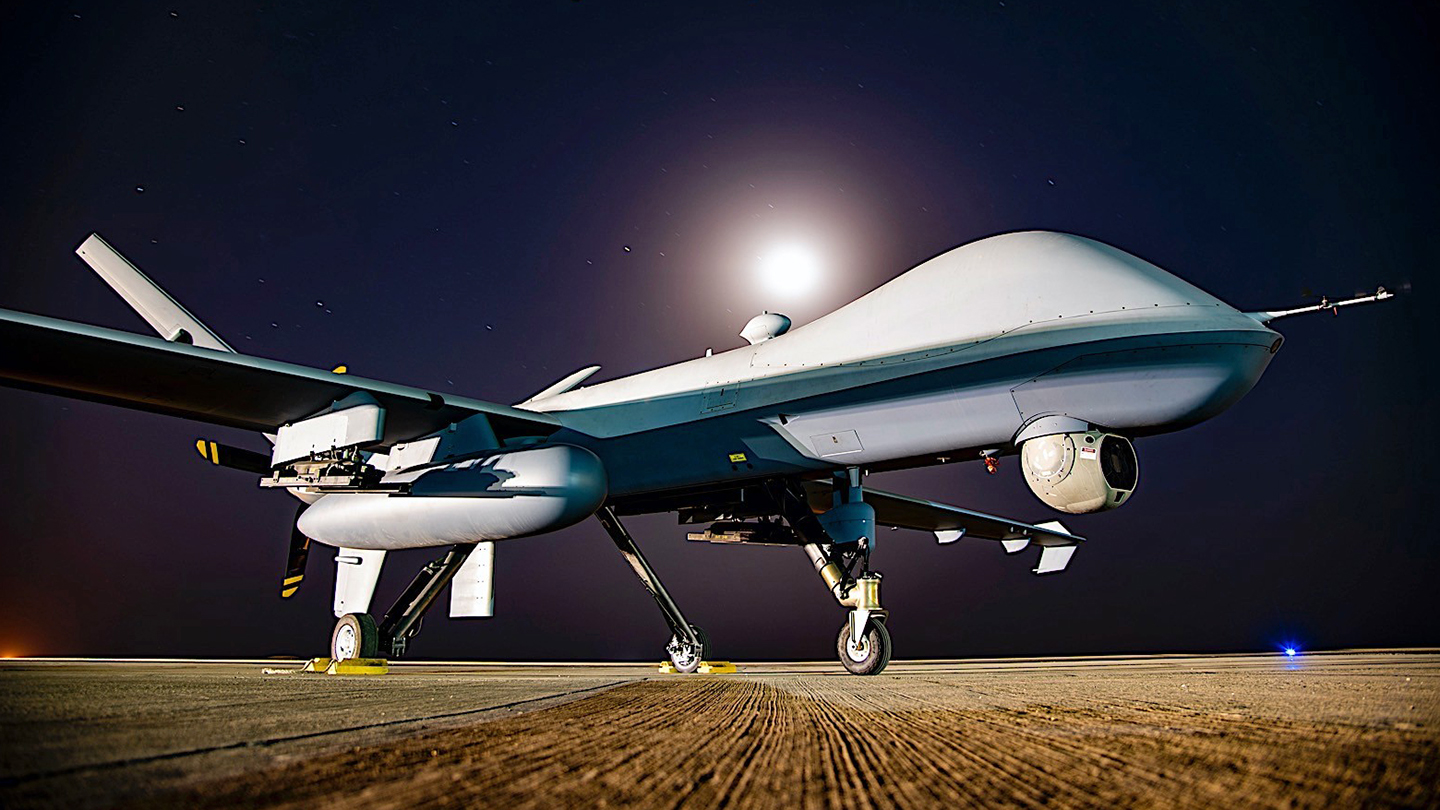The idea of Ukraine acquiring MQ-9 Reaper drones has been widely questioned if not outright panned by many experts, commentators, and even Ukraine’s own combat pilots. The drone, which flies at relatively slow speeds at medium to high altitudes, has been viewed as unsurvivable anywhere near the front lines and a detour in resources for Kyiv’s air arm, which is already under immense pressure.
The debate about the Reaper’s relevancy in the Ukraine conflict, which parallels a larger parley over the platform’s future, was revitalized after its maker, General Atomics Aeronautical Systems (GA-ASI), in early February offered to sell two such drones to Ukraine for $1, arguing the MQ-9 does indeed have a role to play in the conflict.
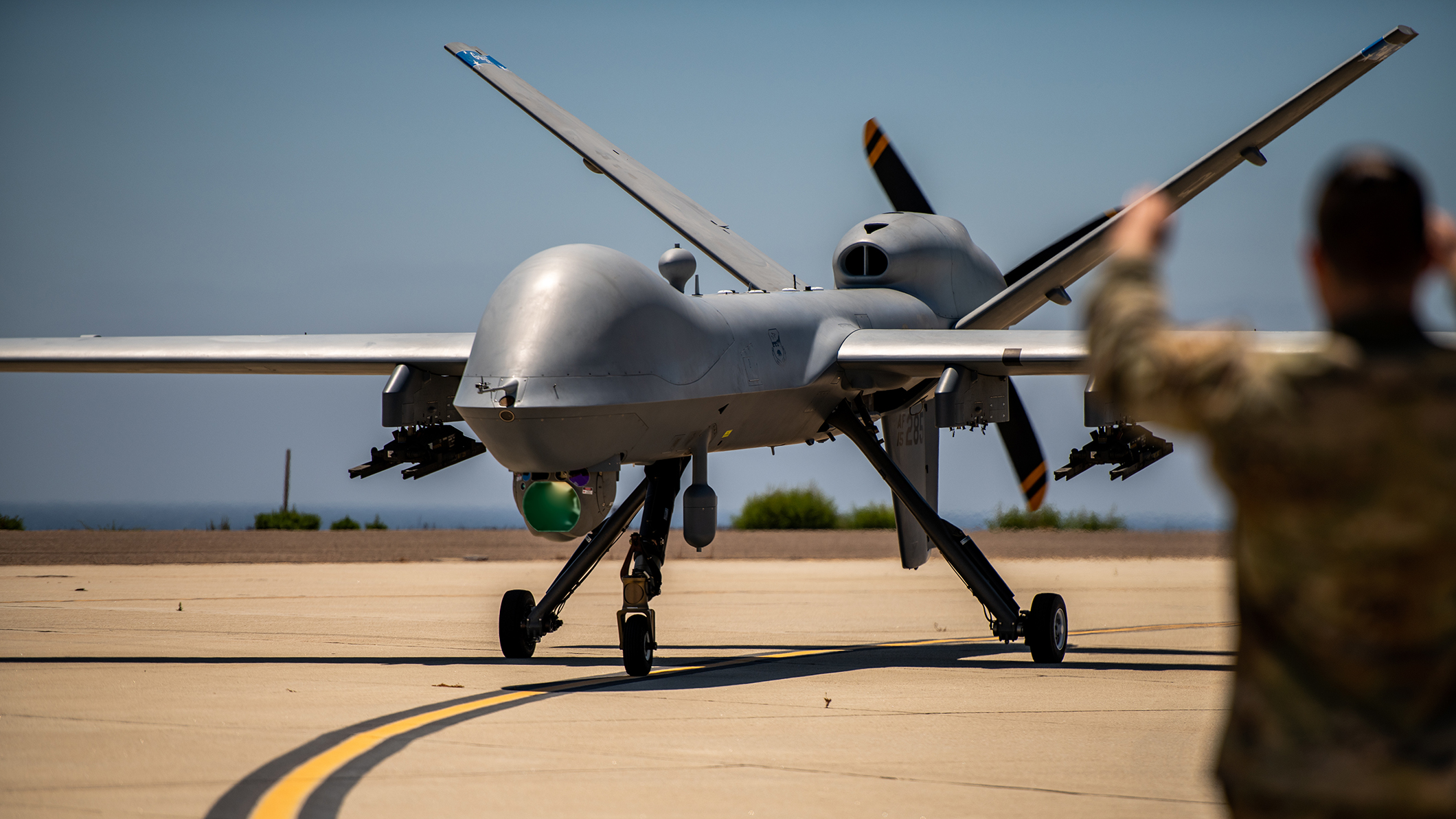
The War Zone wanted to present a counterpoint view to the prevailing discourse and the right person to offer such a perspective was retired U.S. Air Force Maj. Gen. Lawrence A. Stutzriem. He believes strongly that, with the right mission package, sending MQ-9 Reaper remotely piloted aircraft (RPA) to Ukraine could absolutely have a meaningful and valuable effect. While confidence in the MQ-9’s ability to survive over the Ukrainian battlefield isn’t held by many, Stutzriem doesn’t share this view.
The prospect of sending Reaper, as well as its smaller MQ-1C Gray Eagle cousin, to Ukraine, has been floated a number of times since Russia’s all-out invasion of the country began last February. According to GA-ASI spokesman C. Mark Brinkley, the company has for months “been talking to members of Ukraine’s government and armed forces about their needs” and “high-quality, long-endurance [intelligence, surveillance, and reconnaissance (ISR)] has been on every wishlist.”
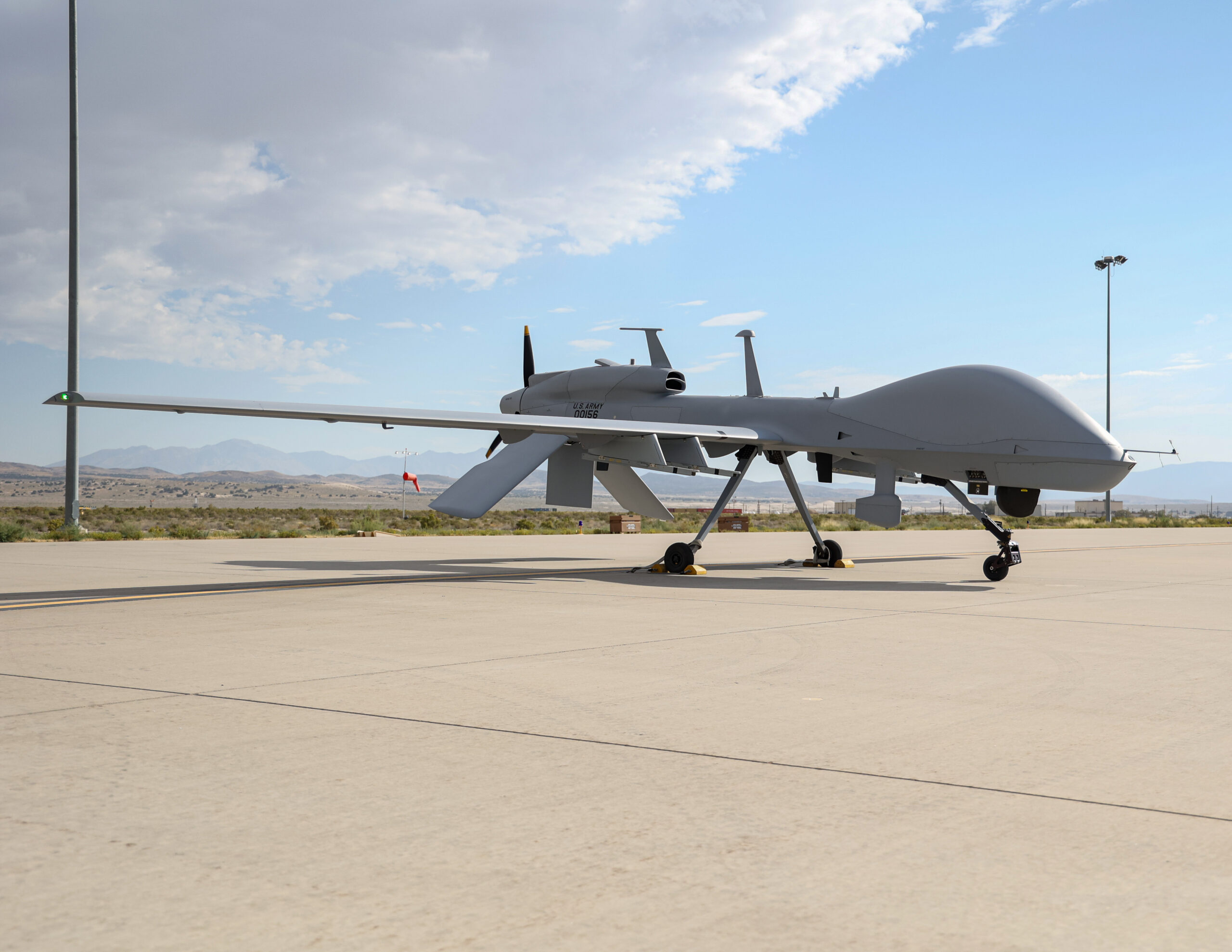
Reaper, which is a multi-mission turboprop-powered attack and ISR drone, has proven itself as a workhorse in theaters like Afghanistan, Syria, and Iraq, as well as many other locales around the globe. However, America’s early-millennium counterinsurgency and counterterrorism efforts differ in numerous ways from the ongoing conflict in Ukraine, making it difficult to ascertain exactly how beneficial sending Reapers into that battle would be.
Russia has employed a vast, layered air defense ‘overlay’ across the front lines that extends deep into airspace over Ukrainian-controlled territory. Some, including Ukraine’s own combat pilots, have argued that this would make it very tough for slower, easily detectable drones operating at medium and higher altitudes like Reaper to survive anywhere near the front lines, much less reach the target areas necessary for the drone to leverage its direct attack capabilities. At this time, even Ukrainian fast jets don’t venture near forward areas at anything but very low levels.
There is also more than meets the eye to GA-ASI’s high-profile offer. In a statement written by the company’s CEO Linden Blue, he explained that the $1 price tag would allow Kyiv to acquire only the two Reapers and a ground control station to operate them from a disparate location should it accept. But that price of basically nothing does not include some very expensive items. It will take about $10 million in preparation and shipping costs to get the Reapers to Ukraine, and around an additional $8 million each following year to maintain and sustain the drones, which would still have to come out of the pockets of Kyiv or its allies.
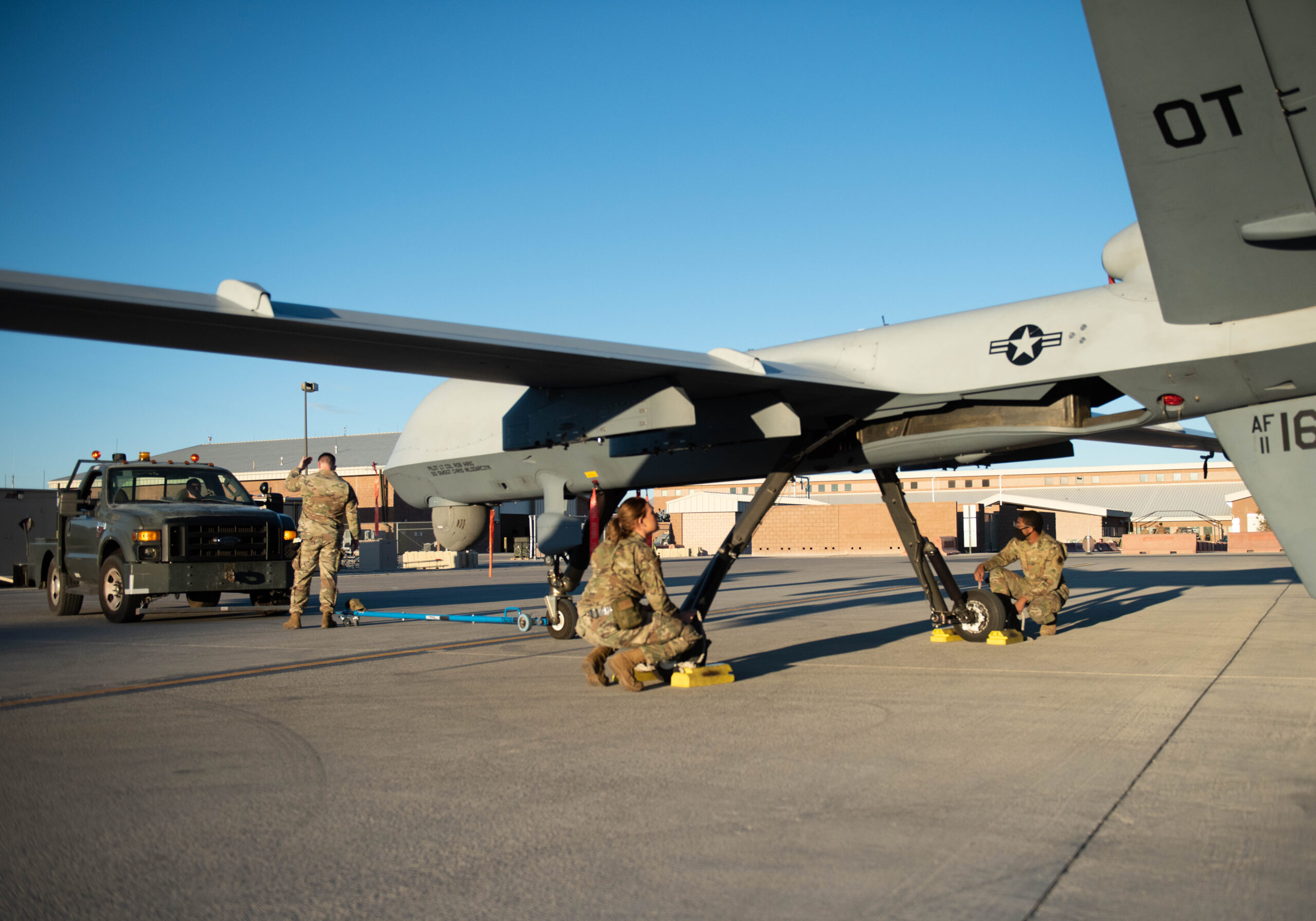
There would also be the need to train operators on the Reaper if Ukraine is to take GA-ASI up on its offer. While this can take many months or even years for other operators, Brinkley said that given the situation, Ukraine’s training would take place on a compressed timeline. GA-ASI did also say that the company has offered to conduct this training with Ukrainian operators at no cost to U.S. taxpayers or the Ukrainian government.
Likely in reference to the existing criticisms of Reaper’s relevancy in high-end conflicts, Blue wrote in his statement that GA-ASI has “delivered more than 1,000 aircraft over 30 years and flown nearly eight million flight hours, most of them in hostile areas around the world. This is all we do. We know that introducing these systems to the battlefield will provide an immediate impact.”
And Stutzriem, who is not affiliated with GA-ASI, agrees.
Reaper Relevancy
Now the director of research for the Mitchell Institute for Aerospace Studies, the early days of Stutzriem’s career saw him serving as director of operations for Joint Task Force Southwest Asia in 2001. After 9/11, Stutzriem and his team leveraged the air operations center in Saudi Arabia during Operation Enduring Freedom in Afghanistan, and it was around this time that he became familiar with the use of the MQ-1 Predator, the direct predecessor to the MQ-9.
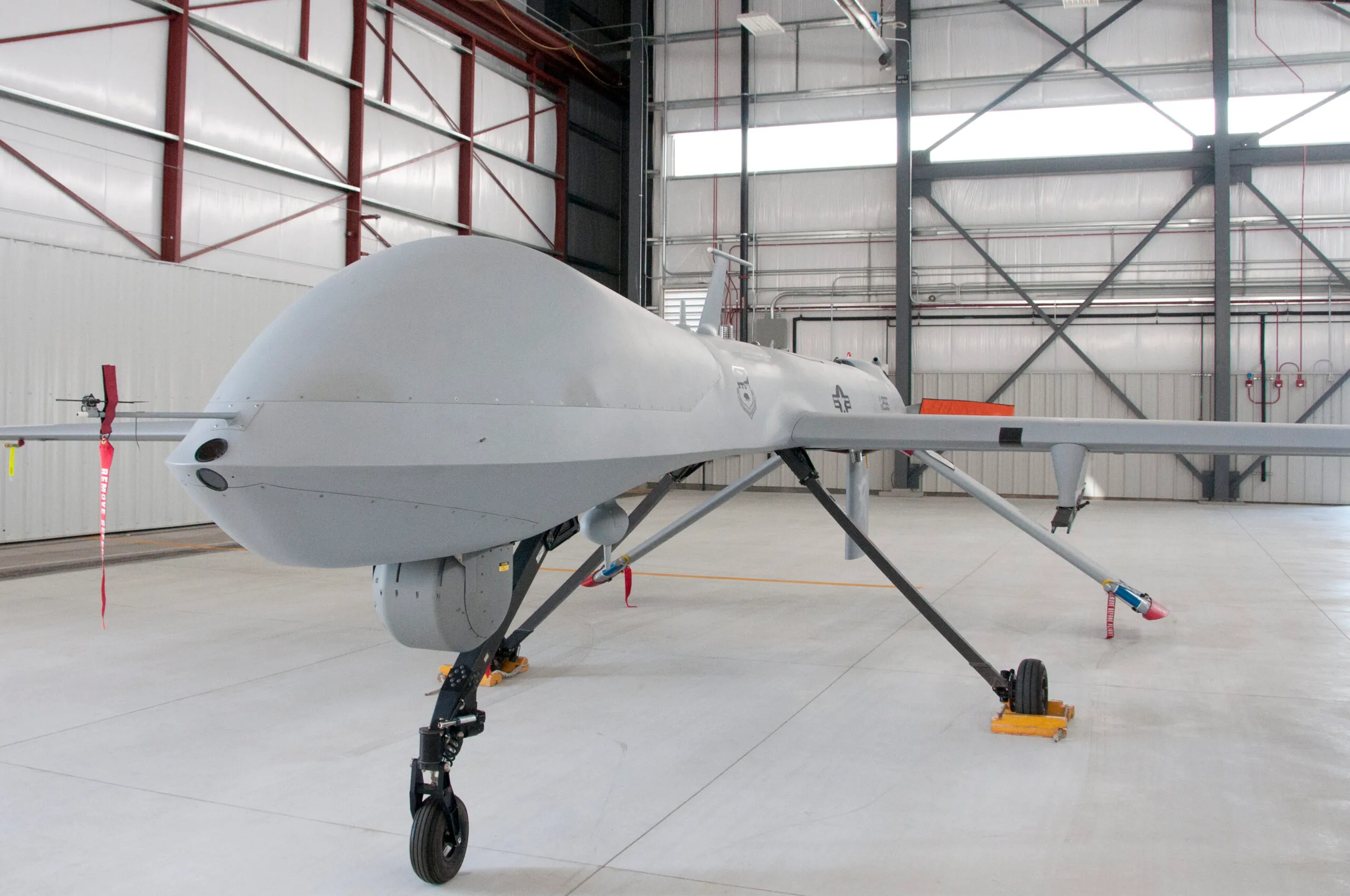
While the Reaper later evolved to become a much-improved variant over the MQ-1 in terms of size, performance, and overall capability, Stutzriem still recalls knowing that he and his team were at the forefront of an unmanned revolution that would change military operations forever. Since then, Stutzriem has been channeling his experience and knowledge of the Reaper and its progenitor into larger Air Force strategy and operational planning issues, even authoring a policy paper for the Mitchell Institute on the MQ-9 titled ‘Reimagining the Reaper.’
While Stutzriem had no hand in GA-ASI’s offer to sell Ukraine two Reapers for $1, he’s a proponent of the overarching idea nonetheless. Anything that could help support efforts to ensure that Reaper still has a future in both U.S. and allied airpower is a win in his book. As far as he’s concerned, “not all weapons systems seen as vulnerable in contested airspace are truly obsolete,” wrote Stutzriem in his paper.
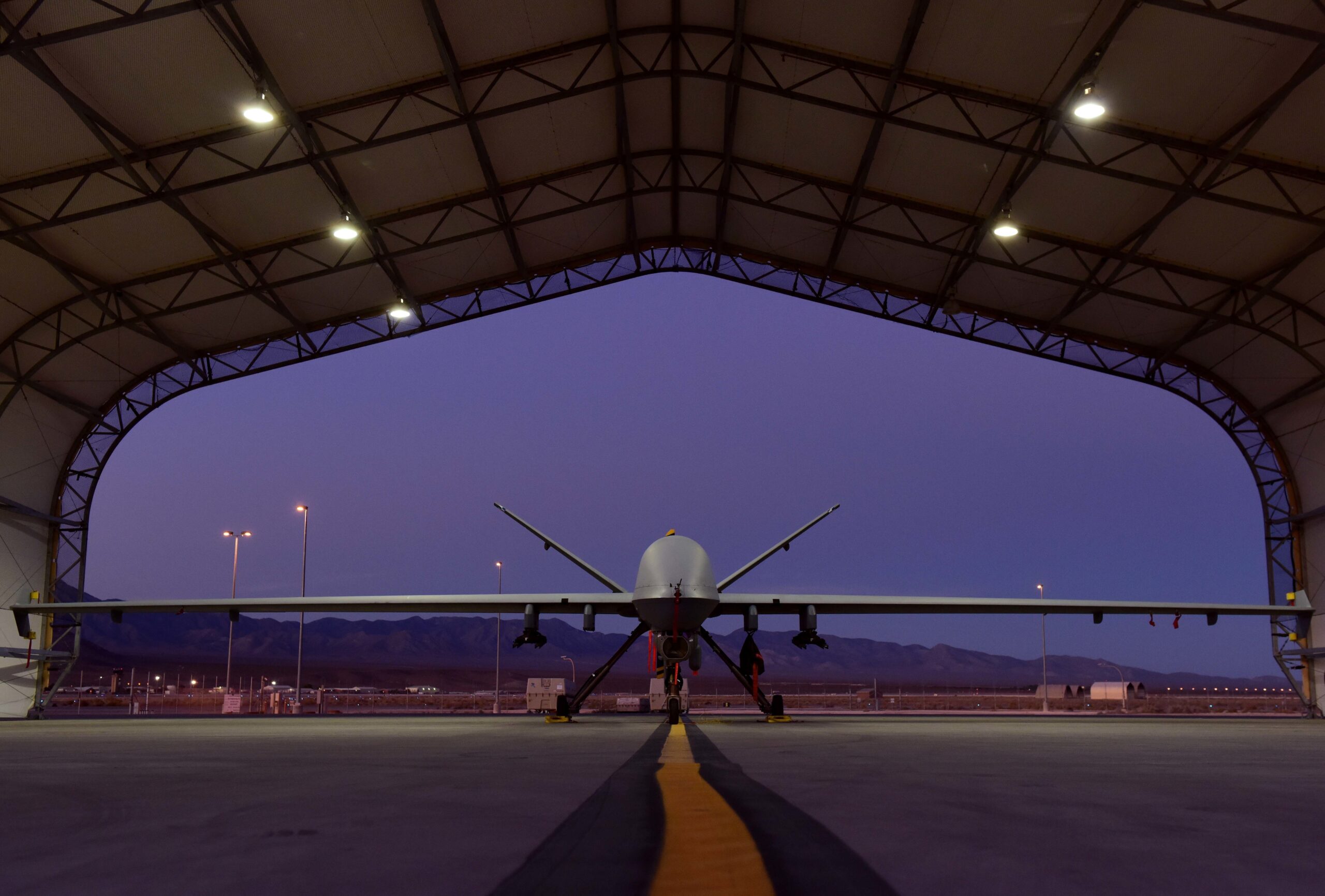
“I think generally there’s an atmosphere that’s very resistant to bringing any airpower into Ukraine,” Stutzriem said to The War Zone. “As we’ve seen, there’s this slow deliberation of ‘Are we or are we not? Is it destabilizing? Is it not?’ I think part of that is because we have a very dominant ground warfare perspective in the leadership of the Pentagon right now. Officers who have not spent 30 or 40 years looking at the value that some of these very unique airpower capabilities can bring.”
According to Stutzriem, sending Reaper to Ukraine first and foremost would open a door that could allow Defense Department decision-makers to see exactly what the RPA can do in such a hotly contested theater, vulnerabilities and all. This would essentially serve as a further proof of concept for the drone’s future. The Air Force has been seeking to further draw down its MQ-9 fleet and looks to replace it entirely with a more survivable and capable system, or set of systems, that are specifically oriented to peer-state, high-end conflicts in the not-so-distant future.
Even with a fleet of only two, should Kyiv accept GA-ASI’s offer, he believes that just giving Reaper the chance to establish its capabilities over Ukraine could also present the opportunity to send more of the RPA or systems like it to the country in the future.
Faring Against Russian Air Defense
The question of whether or not Russia’s robust air defense umbrella would even give Reaper a chance to perform remains, but Stutzriem isn’t terribly worried about that, either. In fact, he believes that there’s been a widespread misrepresentation of a number of factors in this regard, including just how all-encompassing and effective Russia’s air defenses actually may be.
“Russia’s S-400, its air defenses, are not steel bubbles…There are not unlimited lethal threats that are going to have 100% probability to kill covering the entire landmass in which the overall conflict is occurring,” Stutzriem said. “Reaper’s intelligence is able to map and understand where there may be appropriate places to operate.”

In other words, Russia isn’t employing “a blanket of suffocating defenses that say you can’t take a non-stealthy airframe and use it in effective ways in this combat environment,” Stutzriem added.
That isn’t to say that the chance of Reaper running into some hairy situations isn’t still a prominent reality. While this would have to be factored into both ISR and strike operations, the latter especially could put the Reaper in some particularly precarious positions. This is because, depending on the munitions being employed, getting the RPA to the necessary target area could push it further into the envelope of an array of Russian air defense systems.
Reaper has a 3,850-pound payload capacity that includes 3,000 pounds of external stores, which can include a variety of weapons with differing engagement ranges like the AGM-114 Hellfire and GBU-12 Paveway laser-guided bombs, which offer little standoff capability. Joint Direct Attack Munitions (JDAMs) and Small Diameter Bombs (SDB) offer more. JDAM, and to a larger degree SDBs, both of which Ukraine is set to receive from the U.S., could each provide the Reaper with some level of standoff strike potential, and thus enhance its survivability if employed. But would being able to stand off a few dozen miles at most from its target be enough?
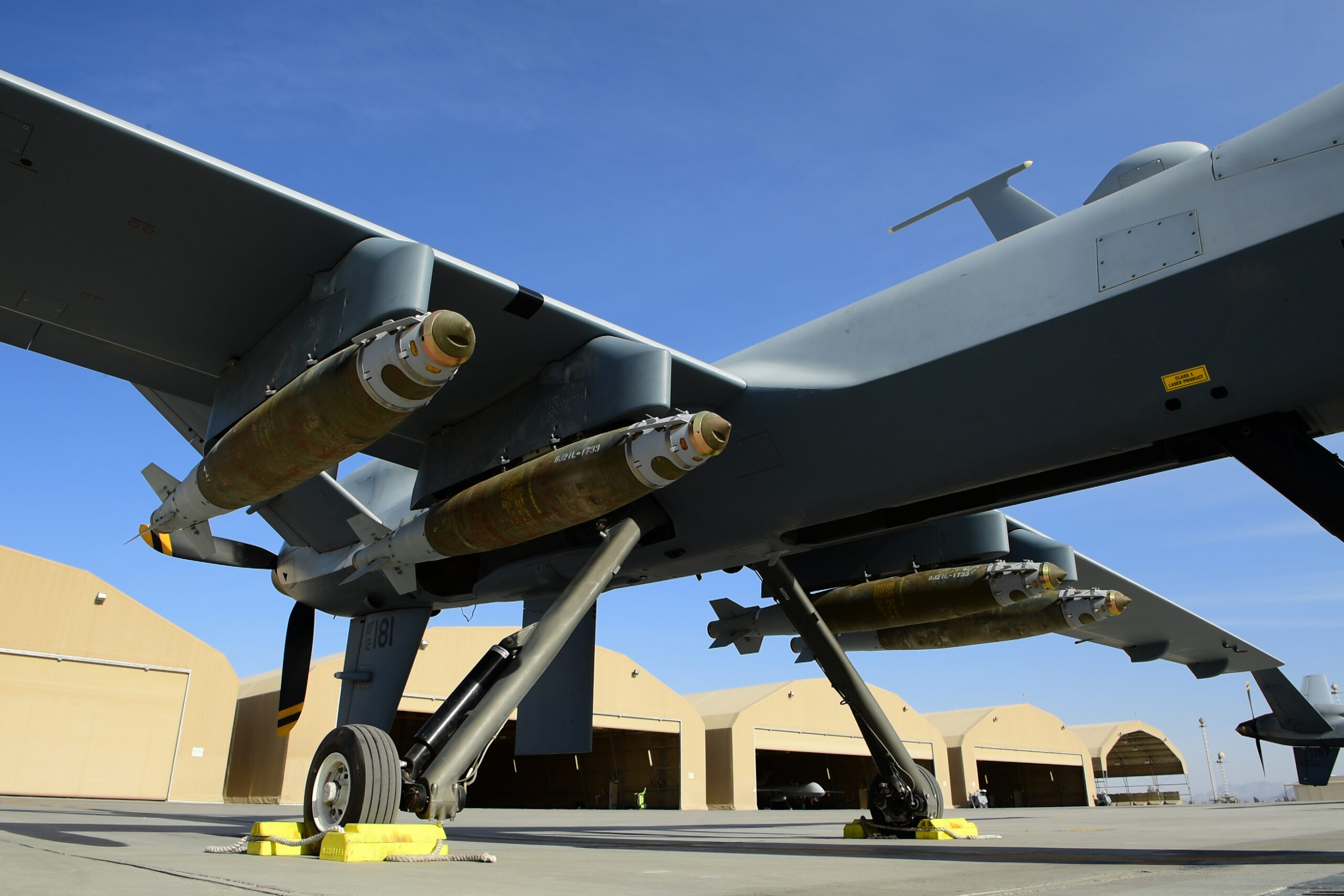
While both platforms differ in enough ways to caution against any definitive comparisons of the two, Ukrainian forces faced similar challenges following their initial success with Bayraktar TB2 drones. A Ukranian combat pilot who goes by the callsign “Moonfish” stated that operations with the drone inevitably had to be scaled back drastically because of its vulnerabilities in contested airspace.
“[Bayraktar TB2 drones] were very useful and important in the very first days,” Moonfish said, referencing how the drones were helpful in stopping columns of Russian armored vehicles and troops heading toward Kyiv. But once Russia employed more robust air defenses, he said TB2s became “almost useless.”
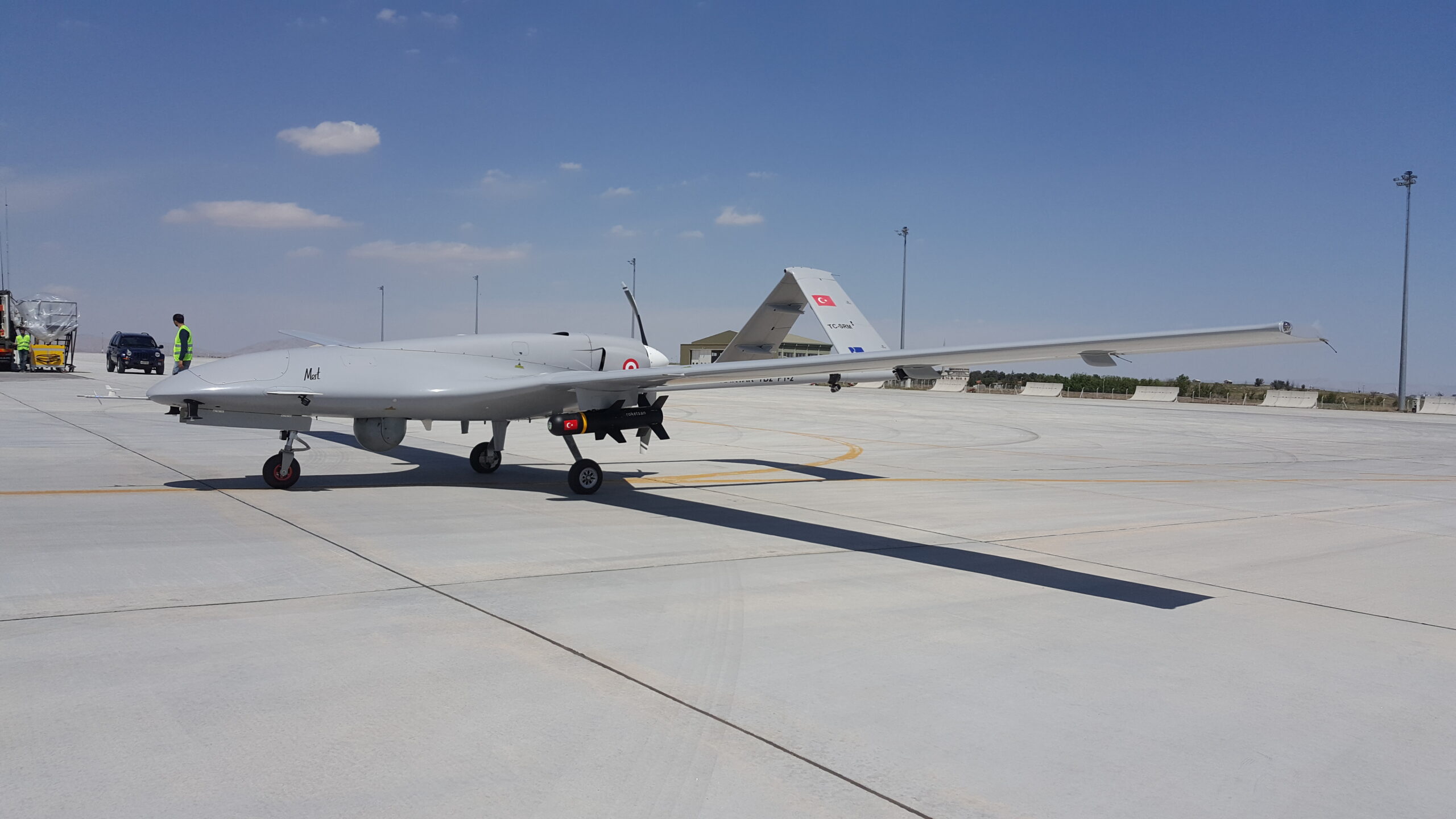
Another Ukrainian fighter pilot going by his callsign “Juice” noted how the same reality would even face platforms like Gray Eagle, which doesn’t speak to Reaper’s potential fate in the country very promisingly. He explained that Gray Eagle can only really be used for reconnaissance at certain distances and “not for attack missions because for attack missions you need to be closer [to the enemy].” He added, “It’s a very capable platform … but as for me, it’s very dangerous to use it just on the front line. It’s not Afghanistan here.”
If acquired, though, Reaper would be Ukraine’s only aerial platform with a 1553 bus architecture, meaning that the RPA would come with the interfaces necessary for the integration of other Western weapons. This could provide a platform for new weapons and other capabilities, outside of providing fighter jets, for instance, although the types of stores a Reaper can carry are more limited.
Providing Eyes And Ears In The Sky?
Reaper’s strike abilities, though, may not be the driving force behind sending the RPAs to Ukraine, with its ISR mission set instead being the main motivator. GA-ASI’s Brinkley said that “too many people are focused purely on the strike capabilities of the MQ-9 and, while formidable, those are not the only uses for the aircraft. Ukraine needs information, targeting, and overwatch, and two MQ-9s would be a powerful asset.”
While Reaper’s strike abilities could be leveraged to ‘close kill chains’ if needed by attacking the targets it identifies, Stutzriem too believes that the RPA’s ability to conduct wide-area surveillance and overwatch of land forces and critical infrastructure alone could make a notable difference for Ukraine’s war effort.
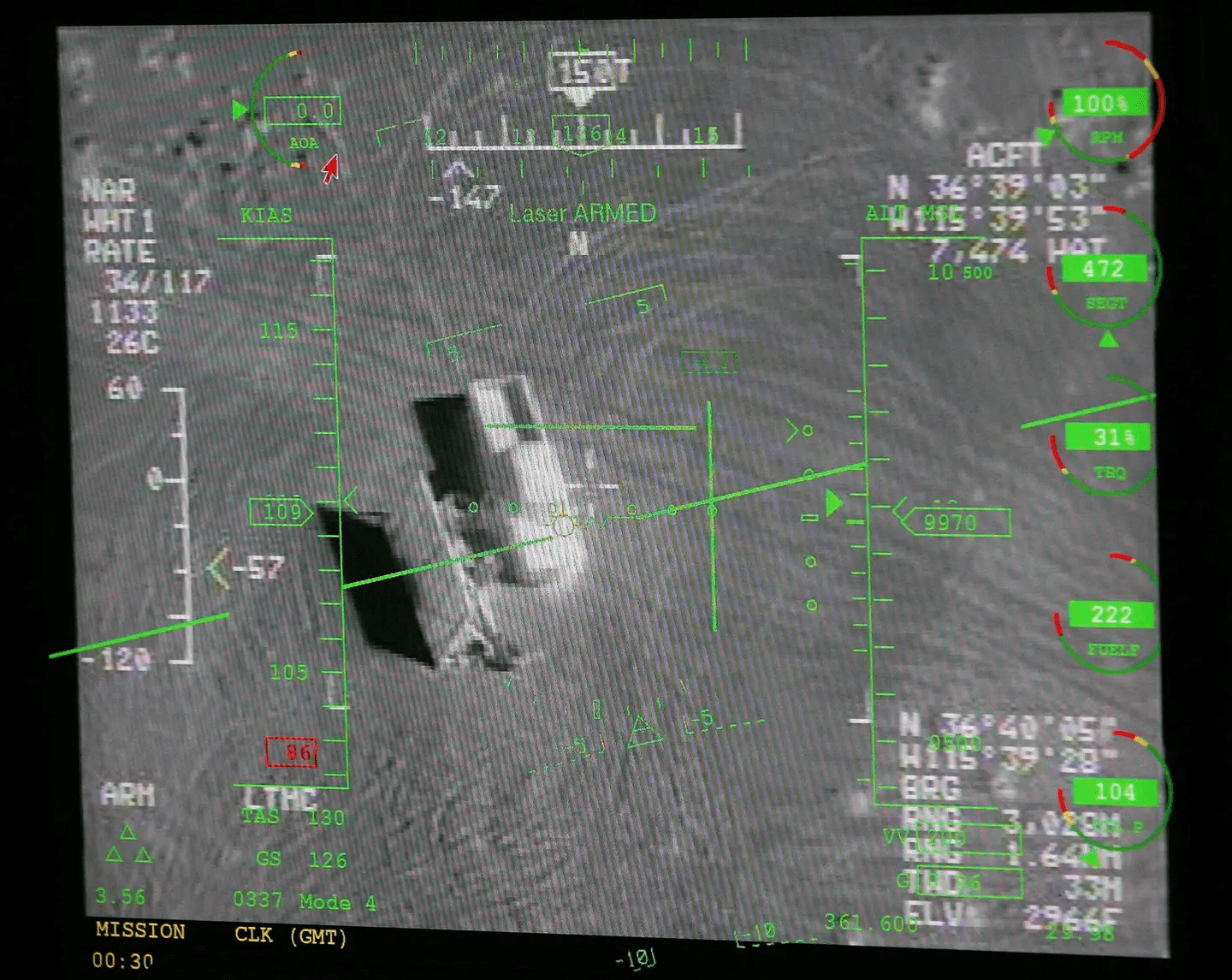
In his paper ‘Reimagining the Reaper,’ Stutzriem wrote, “Long-endurance unmanned aircraft such as MQ-9 Reapers that could host payloads of upgraded active and passive sensor technology to provide wide-area ISR data are ideal” for long-duration surveillance operations. In Ukraine, the military could send a Reaper out on such missions to “sense and analyze enemy movements as early as possible and then attain a force posture needed” to address the potential threat without directly risking human life.
“Enhancing Reaper’s functionality in new mission areas is not a difficult task,” Stutzriem continued in his paper. He noted how there are podded sensor and processing capabilities available for Reaper that have already been demonstrated or are at high technology readiness levels “for missions such as electronic support, signals intelligence (SIGINT), and even ground and air moving target sensing (GMTI/AMTI).” Aerial GMTI is one major capability that Ukraine and its allies lost after the invasion began, for instance. This was provided by allied surveillance aircraft that have since been pushed hundreds of miles away into safe airspace, with the battlefield out of the range of their sensors in many cases. Reaper could bring this capability back, but whether it could survive in doing so is the big question.
Providing Ukraine with a modern platform to carry advanced electronic warfare payloads could also be a big advantage, with the capability to blind and confuse the enemy across critical parts of the electromagnetic spectrum. The Reaper is a good platform for this application, but not if it can’t get close enough to employ its electronic warfare bag of tricks.
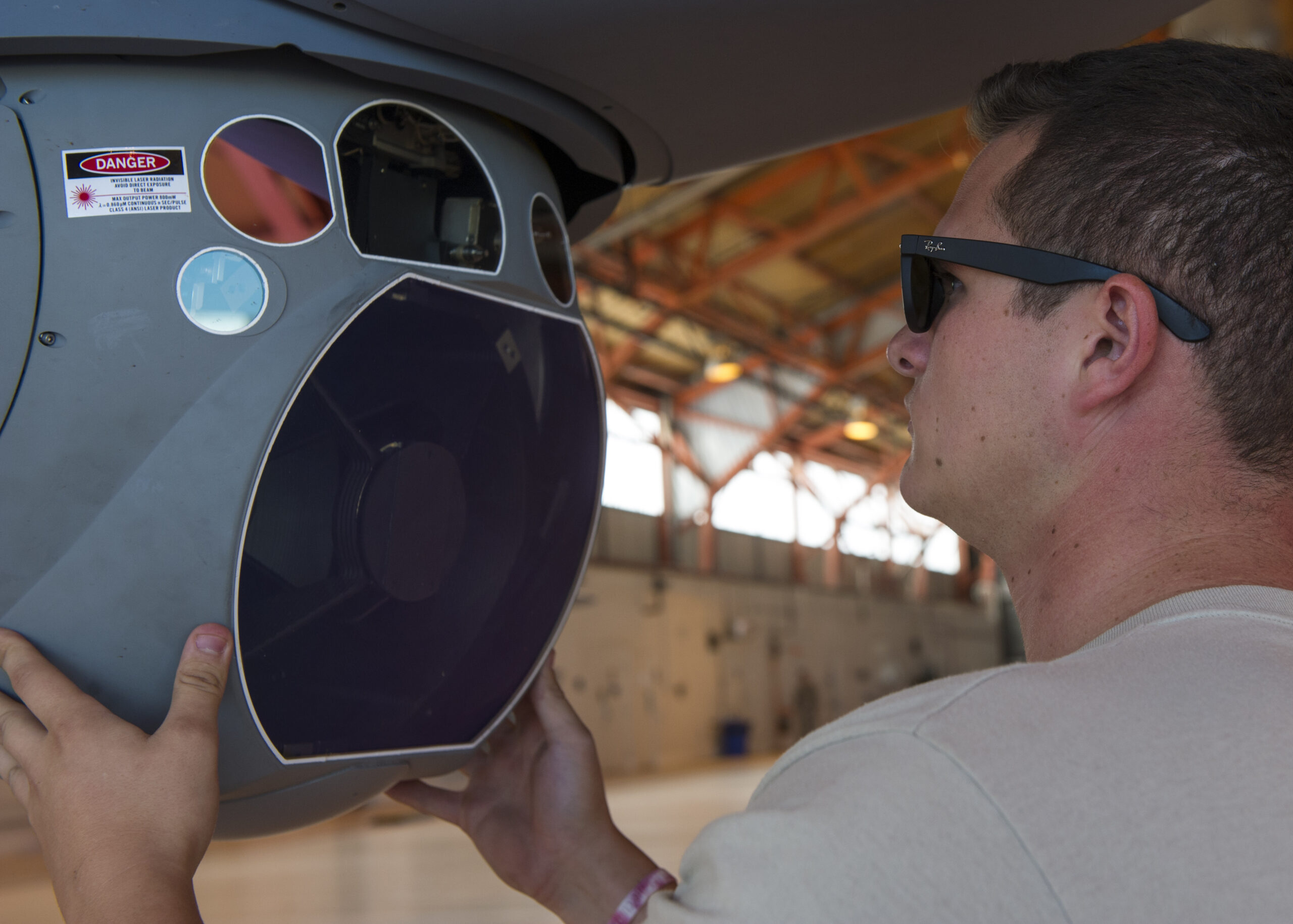
Brinkley said that many of the specific operational ranges of Reaper and its ISR capabilities are kept classified, so it isn’t immediately clear exactly how much standoff and survivability they would provide Reaper for long-duration, wide-area surveillance missions. However, Brinkley also added, “I don’t think anyone is suggesting that the MQ-9s should fly headlong into advanced counter-air defenses.”
“MQ-9 brings long-range sensing, with the opportunity to stand off from enemy air defenses and still provide awareness into the battlefield. We know that the MQ-9 remains relevant in combat, and that military strategists can use them to great effect with the proper tactics and payloads,” Brinkley said.
Self-Protection Capabilities
Stutzriem emphasized that self-protection technologies for the Reaper do exist specifically to increase its survivability in more contested scenarios. The War Zone discussed these at length in this past feature. These capabilities can come in the form of electronic warfare pods and SIGINT payloads as noted earlier, or threat warning systems made up of sensors designed to indicate when Reaper is being surveilled, detected, or targeted by an adversary. Full-on self-defense pods also exist that can employ defensive countermeasures.
“That is combined with other intelligence and other analysis that is being funneled directly to the operations center from which the Reapers are being controlled,” Stutzriem said. “So, you don’t look at the Reaper as one airframe that’s out there in the battlespace unassisted. It can be supported by threat warning that allows it to move to and fro and so forth, and that changes as things mature or move in the battlespace. It could be in the form of a pod that’s on the Reaper, but that’s just part of it.”
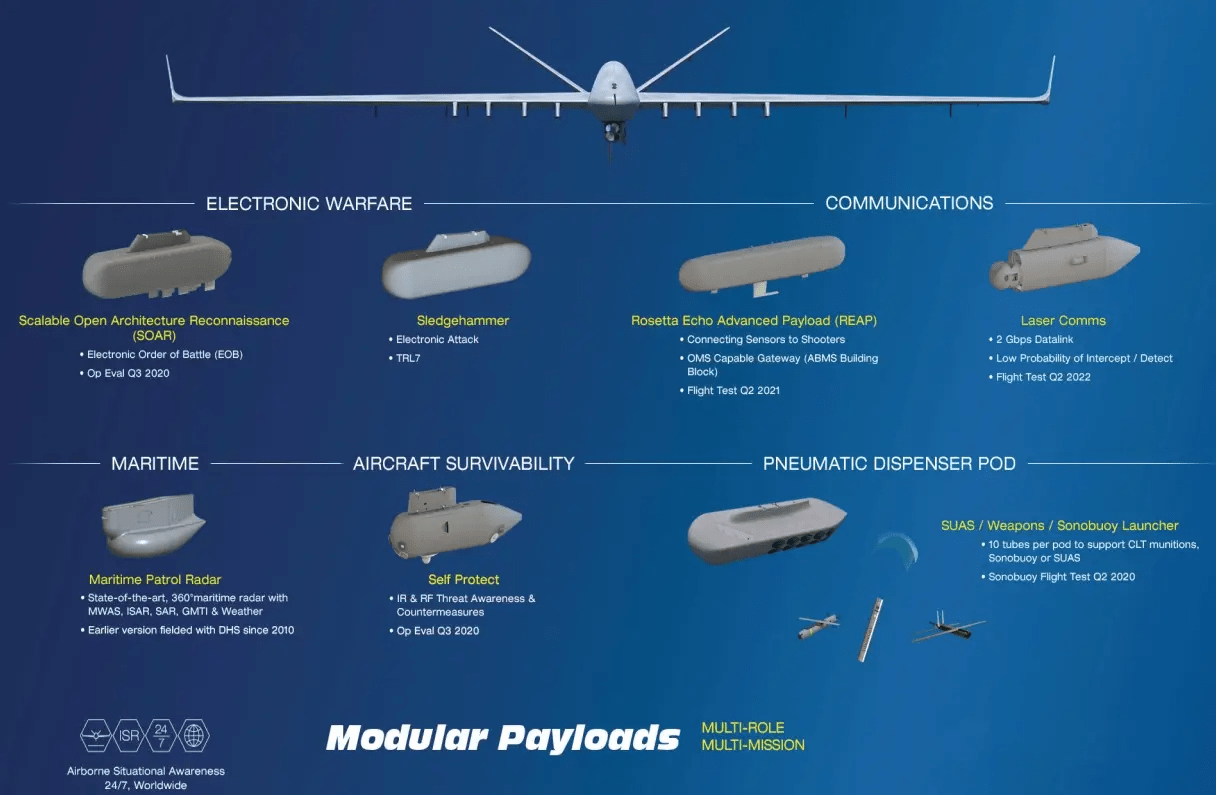
Among these options is the Self-Protection Pod (SPP) that GA-ASI last completed a flight testing demonstration with using a Reaper in January 2021. The SPP is designed with built-in radar warning receivers and an AN/AAQ-45 Distributed Aperture Infrared Countermeasure (DAIRCM) system that provides spherical warning of approaching missiles and other threats. SPP can deploy decoy flares, chaff, or even active expendable countermeasures from its countermeasures dispenser that can further confuse incoming missiles.
DAIRCM can also defend Reaper by employing a laser against incoming infrared-guided missile threats by blinding them and sending them off course. This pod, in particular, could prove essential to Reaper operations in Ukraine, or at the very least expand its use case. Whether or not such a system would be approved for export to the conflict zone is another matter.
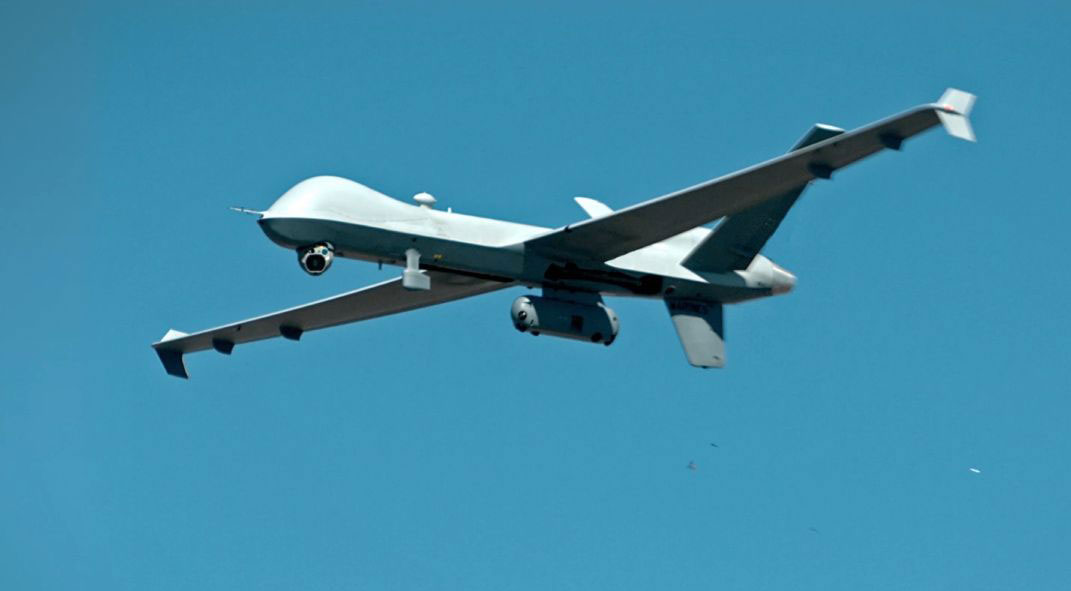
While the U.S. government rather than Kyiv would ultimately be responsible for approving any payloads that would be allowed to accompany the Reapers to Ukraine, these capabilities paired with the necessary tactics would comprise an overall strategy that would be critical to increasing the RPA’s survivability. Stutzriem compared this aspect of GA-ASI’s proposition to the ongoing debate about whether F-16 Fighting Falcons should be sent to Ukraine, too.
“If we were to introduce F-16 in Ukraine, there’s that question about ‘Okay, we get an F-16, but they’re still going to use Russian-style tactics.’ But what we want to do — and what I hope we would be doing well in advance of a decision to send something like Reaper there — is that you use any airpower piece as part of a force package that involves other things,” Stutzriem said. “Electronic warfare, other threat support and warning, and so forth. So, if you were to sail any aircraft that’s been proposed right now, by itself, into the heart of Russian threats, that would be foolish.”
Of course, F-16s can get out of harm’s way much quicker than a Reaper, they can operate at much lower altitudes, and have the maneuverability and increased situational awareness to counter incoming threats in some circumstances.
Closing Communications Gaps
Ukraine could also potentially deploy its Reapers as more of a mobile networking hub than a strike or intelligence platform. With its ability to be quickly deployed and its extensive flight endurance of between 27 hours and roughly 40 hours providing a long time on station, Reaper could be used to help close battlefield communications gaps in Ukraine for an ample period of time.
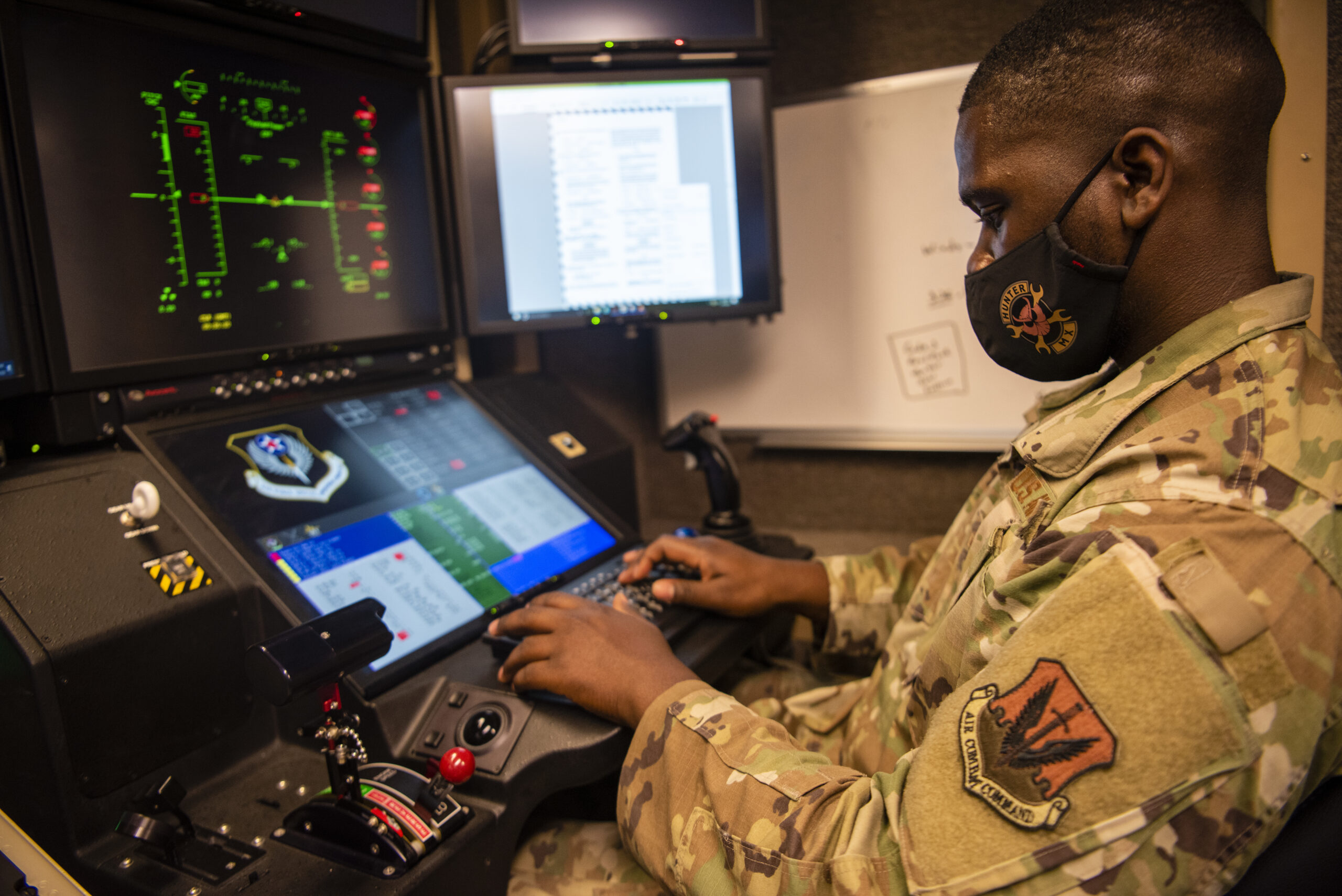
Stutzriem recounted using the Predator in a similar way back in the mid-2000s. He said, “In the battlespace, [Predator] could relay communications that weren’t at the time put together, but you could talk by [satellite communications] to the Predator, for example, and then the Predator could talk to ground forces, and pass information and so forth.”
Fast forward to today, and advanced communications relay and fusion payloads exist specifically for the Reaper. This could see the RPA being pivotal in facilitating communication between troops, various weapons platforms, and operations centers that maybe wouldn’t have had the ability to communicate with such ease otherwise. This could be for a number of reasons, including operating in urban areas where buildings and topographical features can block signals, or simply in environments where communications have been degraded either intentionally by the adversary or due to poor connections and even mismatched radios.
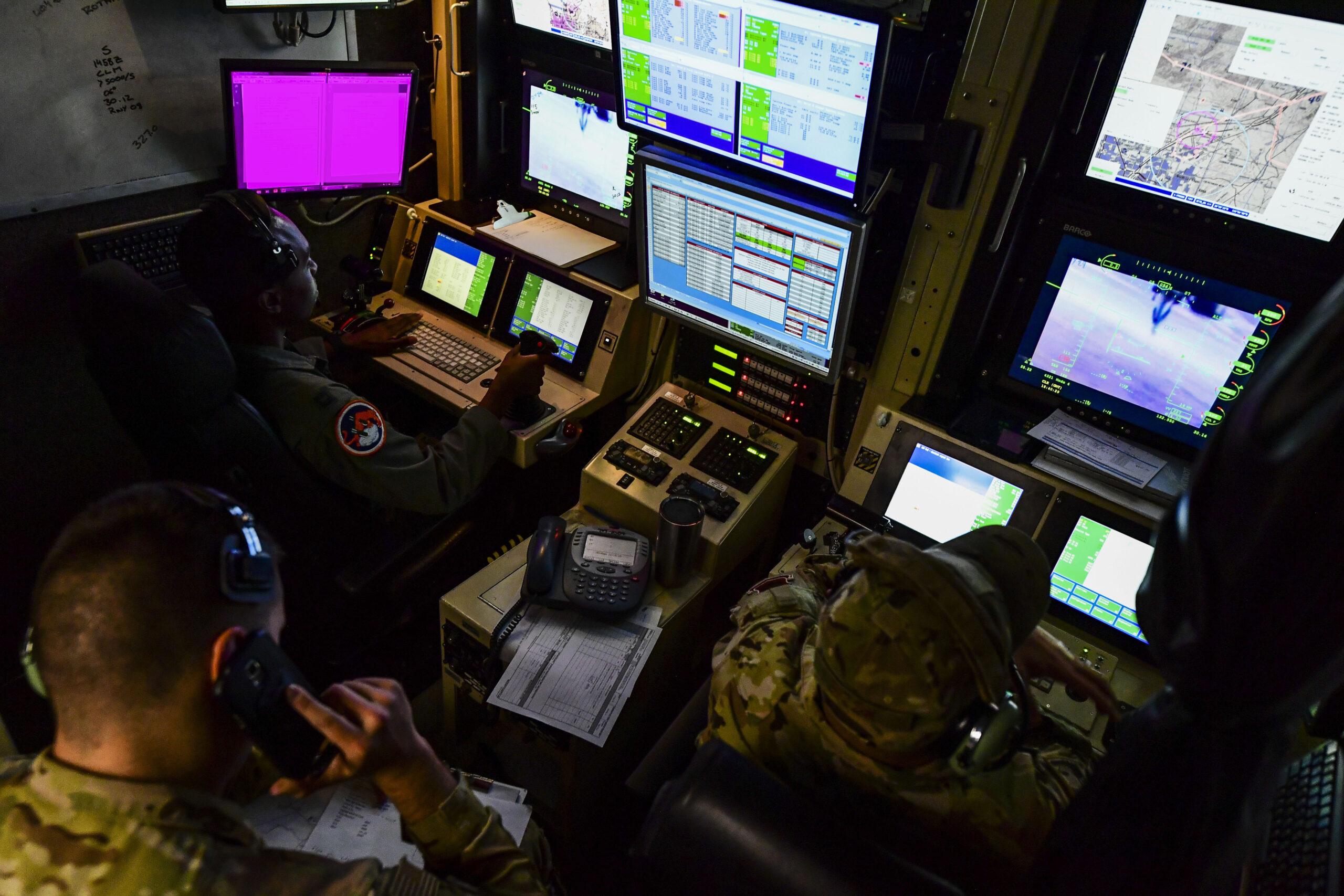
“Certainly, communications gaps are a concern for Ukraine, and something the MQ-9 excels at filling. I think shifting the thinking away from the strike capabilities, and more broadly into the other capabilities MQ-9 provides is a smart approach,” Brinkley added.
Reliable communications would be essential to future Ukrainian offensives, but once again, can Reaper survive and provide this capability over what could become a rapidly changing battlefield?
Technological Risk?
There’s also the criticism that flying a U.S.-designed RPA full of the high-tech electronics that make it effective and survivable puts it at risk for exploitation if taken down and somehow captured by Russian forces. Being that Reapers have been lost before and fallen into the hands of adversaries, this concern may not be as prevalent but is still worth considering. This is especially true if Ukraine’s MQ-9s were equipped with sensitive self-protection, sensor, electronic warfare, or communications payloads.
Brinkley elaborated on this uncertainty, adding that the exploitation argument comes with many ‘what-ifs.’ He said, “First they have to be lost. Then the wreckage has to be intact. Then it has to be recoverable. Then it has to be transported somewhere for analysis. Then they have to glean something useful from that.”
Stutzriem admitted this is a possible outcome that he himself wants to dedicate more time to reflecting on, but noted that it really depends on how exactly a Ukrainian Reaper would end up being configured.

“It’s a question that you’d ask for any piece of NATO support, including from the U.S., that is sent to Ukraine,” Stutzriem said. “It is really frustrating right now that folks want to, in their parochial interests, kind of corral you into a place that says, ‘Oh, my God, but the Reaper if it’s compromised will just spill the beans of our national security.’ Well, what about the rocket launchers we’re sending? What about the tanks we’re going to send? They’re going to be compromised. There’s not going to be a zero loss of any support that is afforded to Ukraine.”
The inevitability of losing platforms, capabilities, and even human life in war is something Stutzriem doesn’t shy away from being completely cognizant of. Along with that, though, Reaper being remotely piloted means that human aircrews aren’t being put at risk during the important ISR missions that Stutzriem believes would be beneficial for Ukrainian forces. In fact, a Reaper’s ground control station can be positioned literally halfway around the world.

“It is unmanned and therefore that’s a benefit of this, and we should expect that we can place Reaper into areas of higher risk,” Stutzriem said. “And perhaps with a fleet of MQ-9s, yeah, we’re going to lose a few, just like they’re losing soldiers on the ground, and they’re losing ground vehicles, and they will when tanks are provided lose some of those tanks. It’s the reality of war.”
Reaper’s Psychological Impact
Beyond Reaper’s kinetic, ISR, and communications capabilities, both Stutzriem and Brinkley made a point to highlight the sheer psychological effect that introducing the RPA to the Ukrainian battlefield could have on Russian forces.
“It can put them back on their heels in terms of trying to understand how that presents a vulnerability to them,” Stutzriem said. “This persistent surveillance that can also be equipped with other types of capabilities, electronic warfare type capabilities, other types of intel collection capabilities, and so forth can really have a psychological effect in terms of perhaps changing, altering, subduing, slowing down Russian operations just from its introduction.”
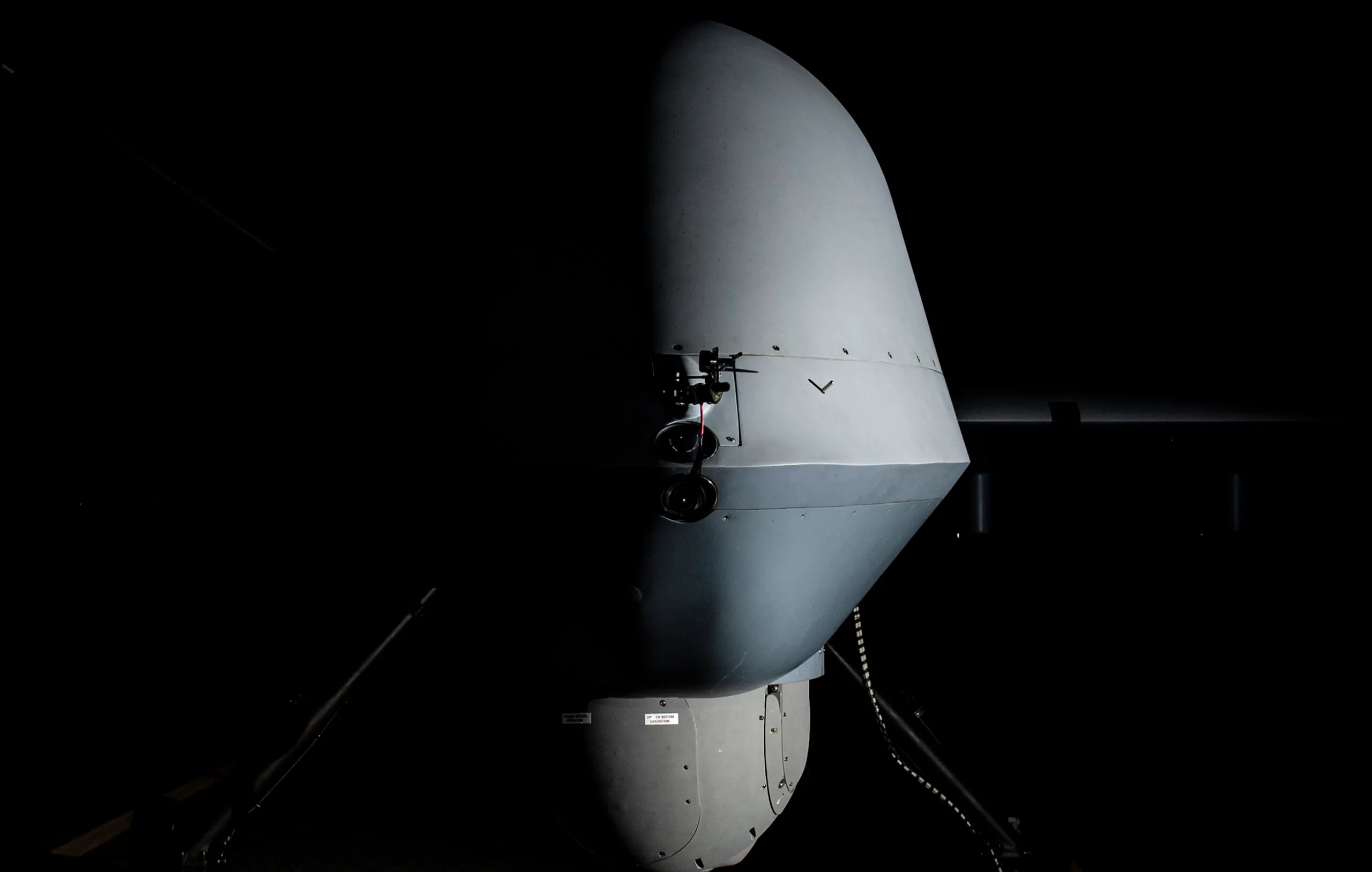
This encompasses a military strategy known as ‘deterrence by detection.’ It supports the idea that, sometimes, when an enemy knows it’s being watched by a platform like Reaper, the knowledge alone is enough to deter adversarial actions.
“Simply introducing MQ-9s to the conflict creates a new variable that must be considered and planned against,” Brinkley said. “Just knowing they might be up there has proven to have a tremendous psychological effect on adversaries. Wars are never textbook operations, and Ukraine has proven to be a resilient and formidable opponent. Nothing is invisible and nothing is invincible, but intelligent use of assets can create many openings.”
Reaper’s Future in Ukraine and Beyond
With the right training and the right configuration, Stutzriem and Brinkley are confident that there’s a real possibility Ukraine could make the most out of a platform like Reaper. Stutzriem in particular believes having the opportunity to familiarize itself with Reaper and its nuances could eventually see the Ukrainian military becoming a major operator of the drone.
Stutzriem even insisted that simply having trained Reaper operators would provide Ukraine with a team of valuable people that could use their newfound knowledge base to contribute to the advanced age of remotely piloted aircraft. One that is rapidly moving toward unmanned collaborative combat types.
“This is the secret, these are the people who are the on-ramp, who get this better than me as an old fighter pilot or a bomber pilot,” Stutzriem said. “There’s a real value to a country like Ukraine, which is in the crucible of the fires of struggling to survive while not being anchored by a bureaucracy like we have in the United States that’s been formed for the past.”
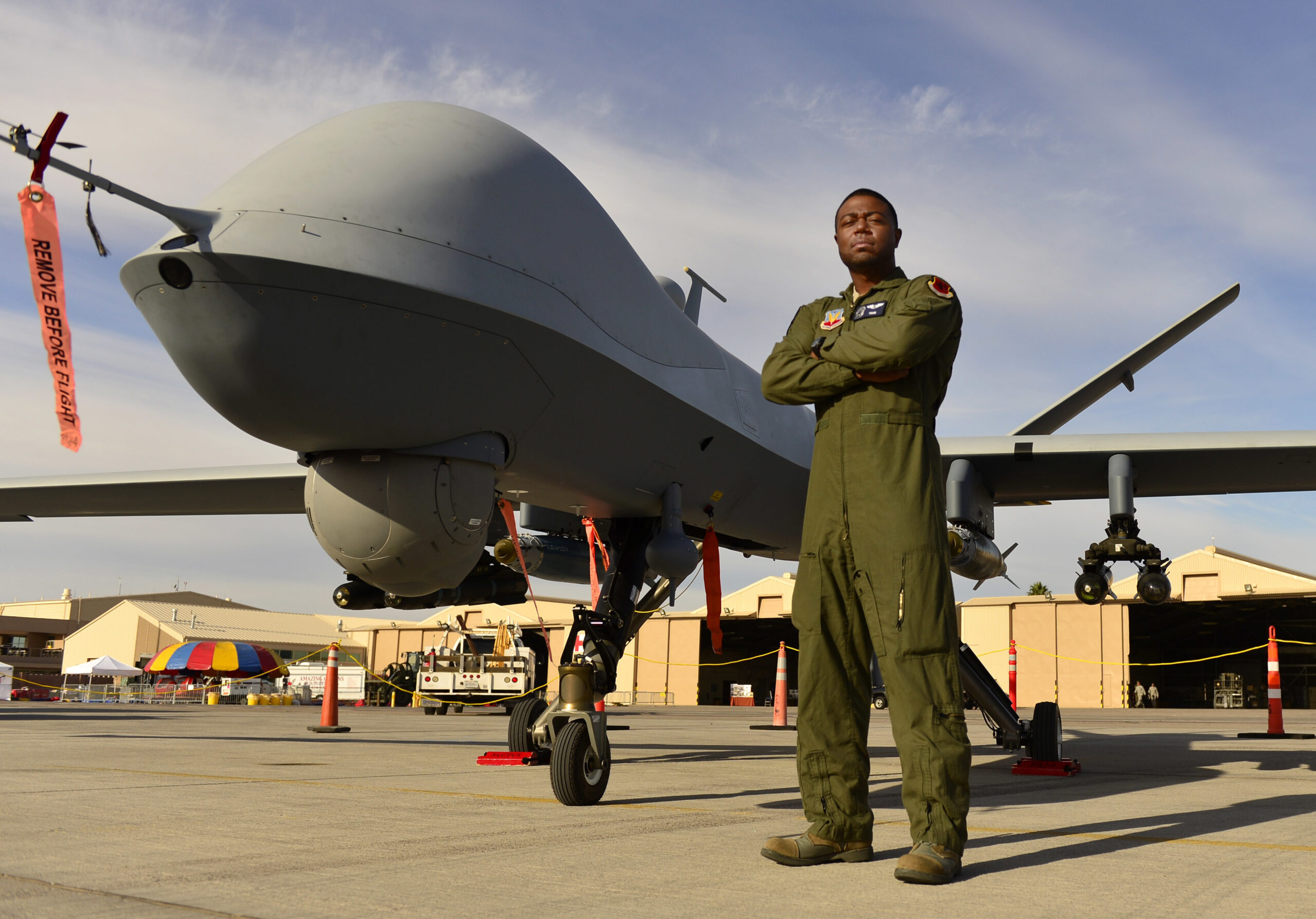
Ultimately, though, sending Reapers to Ukraine and observing how they perform could increase the fleet’s lifespan within the U.S. military. The U.S. Air force has been trying to retire its Reapers for some time now because of these vulnerability concerns. Last year, Pentagon budget documents showed that the Air Force was still looking to halt purchases of Reapers and transfer 100 of its around 300 existing examples to “another government organization” that went unspecified.
If Ukraine acquires two Reapers, the Air Force could take note of its performance in that country and apply the data gathered to its own tactics in areas where the threat level would be high during a time of conflict, like in the Indo-Pacific. In short, Ukraine could help prove that Reapers are worthwhile in modern-day high-end conflicts if they were to prove useful and survivable while in use over Ukraine.
On top of that, GA-ASI itself is working on a number of initiatives that are aimed at ensuring Reaper’s relevancy for years to come. These include the addition of air-launched effects like the company’s new Sparrowhawk drone, onboard artificial intelligence for data-parsing, as well as greater autonomy capabilities. Even kits that turn the MQ-9 into carrier-capable airframes are being floated.
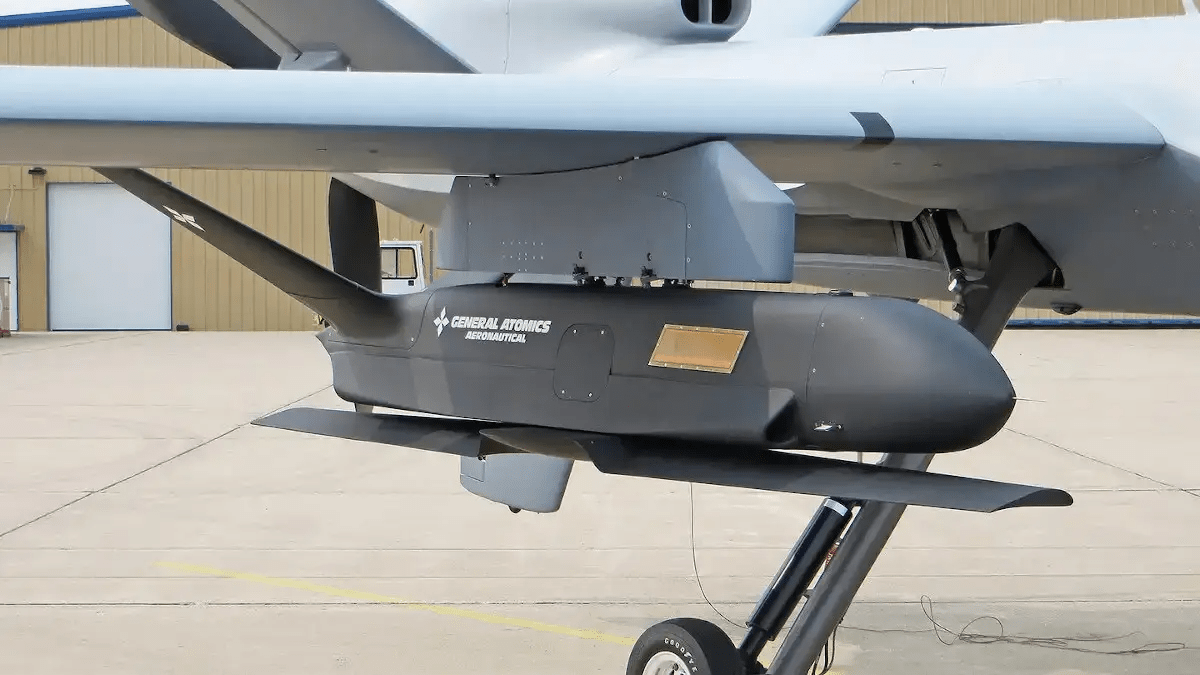
Even just in its current form, though, Stutzriem is confident that “Ukraine can take Reaper and take it to heights we haven’t even thought about.”
Whether that claim will ever be put to the test, and how the Reaper would actually perform over battlefield Ukraine, remains to be seen.
Author’s note: Tyler Rogoway contributed to the questions for this interview.
Contact the author: emma@thewarzone.com
